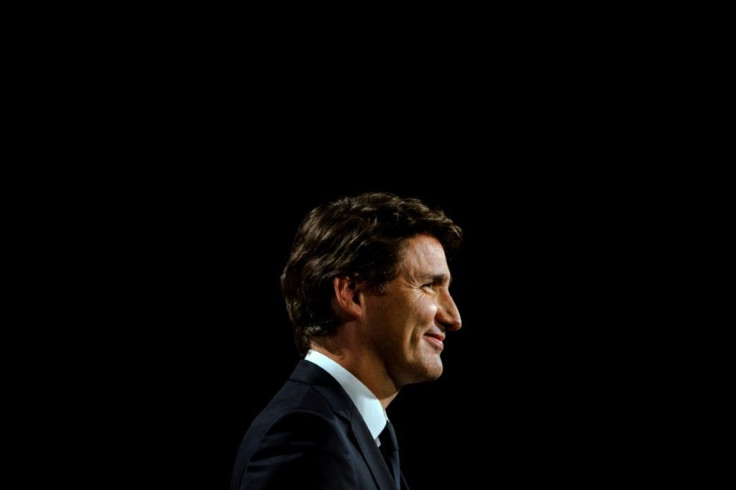Pandemic Fatigue Erupts In Canada, Trudeau Goes Hiding

Canadians have become the first in the world to take to the street to get rid of the fatigue and division created by government overreach to curb the Covid-19 pandemic.
The ongoing truckers' stir in Canada metamorphosed in no time that police have to shell out more than $800,000 a day to bring the situation under control and Prime Minister Justin Trudeau had to go hiding.
What started as a loosely organized Freedom Convoy of trucks from the western province of British Columbia by a coalition of truckers to protest vaccine mandates, picks up steam, and earns more supporters as it drove east within one week.
When it reached the capital Ottawa Jan. 29, private cars and pickup trucks greatly outnumbered the heavy trucks that made up the convoy in its initial days. Besides, the convoy managed to rake in more than C$7 million from over 99,000 donors to their cause.
Slowly, it assumes extremist rhetoric here and there. According to the Ottawa police service, the protesters resorted to "multiple cases of disruptive, inappropriate and threatening behavior."
Downtown Ottawa remained filled with rigs and cars Jan. 31. But Trudeau was not there. Earlier in the day, he announced that he and two of his three children tested positive for Covid-19. They are in quarantine at an undisclosed location.
"Canadians were shocked and frankly disgusted by the behavior displayed by some people protesting in our nation's capital," Trudeau said Jan. 31.
Although the stir was spearheaded by trucker drivers, other groups joined the ranks to air their grievances. These participants appear to have a separate agenda beyond the border vaccine norms that hit truck drivers.
Some of them carried the national flags upside down; one flag had swastikas on it and the air was filled with diesel fumes and the sound of honking horns.
At the capital, without masks on their faces, some of them proved eager to break the mandatory two-year-old social distancing norm. Compliance with other health safety measures also decreased.
The stir was equated to Jan. 6, 2021, storming of the U.S. Capitol as some of the protesters called for an attack on the country's parliament. Others drew parallels with the recent farmers' strike in India where trucks were used in large numbers as a strategy to exert pressure on the Indian government.
In fact, Trudeau's new norm for truck drivers has raised concerns for other reasons which are mainly connected with the fatigue and division created by government overreach to curb the pandemic.
Moreover, Canada is struggling with rising inflation and a supply chain already strained by the pandemic, labor shortages, and inclement weather conditions.
Prices of food and fuel have become dearer. Canada's economy is heavily dependent on truck drivers to import about $21 billion worth of agri-food products from the US every year.
Truck drivers' grievance on vaccine requirements is limited in scope. The US imposed a similar mandate Jan. 22.
Vaccination was made compulsory for ship crews, railways, and airline workers earlier in Canada. On Jan. 15, the norm was extended to truck drivers returning from the US. The requirement does not cover the vast majority of the country's more than 300,000 truckers who ply on domestic roads.
About 90 percent of Canada's cross-border truckers and 77 percent of the population have had two COVID vaccination shots. According to Canadian Trucking Alliance, nearly 90 percent of the 120,000 Canadian truckers who work cross-border routes are vaccinated.
The Canadian Trucking Alliance (CTA), a federation of Canadian trucking associations, has already disowned the protesters, saying a large number of them have no connection to the trucking industry.
Trudeau has made it clear that the vaccine mandate will not be rolled back.
So, the Jan. 15 norm that requires truckers entering Canada to be fully vaccinated or face testing and quarantine requirements only applied to a minuscule population of truck drivers.
After two years of pandemic-related fatigue, Canadians wanted to bargain with the government via truck drivers.
But where is Justin Trudeau?





